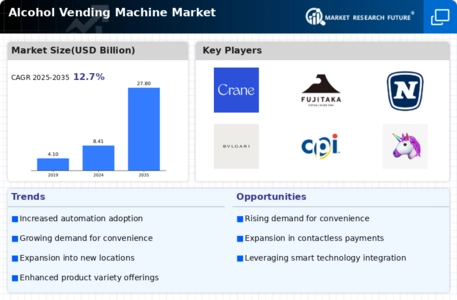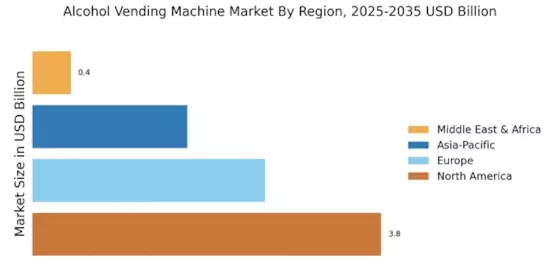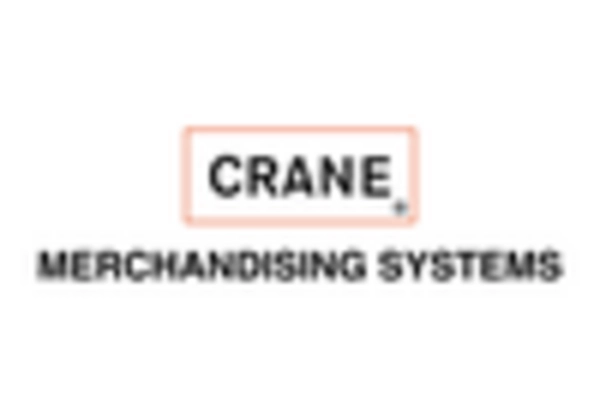Regulatory Changes
The Alcohol Vending Machine Market is significantly influenced by regulatory changes that govern the sale of alcoholic beverages. Many regions are revising their laws to accommodate the growing presence of vending machines in the alcohol sector. For instance, some jurisdictions are implementing age verification technologies to ensure compliance with legal drinking age requirements. This regulatory shift could potentially open new avenues for market expansion, as more locations become viable for alcohol vending machines. Additionally, the introduction of licenses specifically for vending operations may streamline the process for operators, encouraging investment in this sector. Such changes indicate a growing acceptance of automated alcohol sales, which could reshape the market landscape.
Health and Wellness Trends
The Alcohol Vending Machine Market is also being shaped by the rising health and wellness trends among consumers. There is a growing demand for low-alcohol and alcohol-free options, as more individuals seek healthier lifestyle choices. This shift is prompting vending machine operators to diversify their product offerings, incorporating a range of beverages that cater to health-conscious consumers. Recent market analysis suggests that the sales of low-alcohol beverages have increased by 15% in the past year, indicating a significant opportunity for growth within this segment. By adapting to these health trends, the Alcohol Vending Machine Market can attract a wider audience and enhance its relevance in a changing consumer landscape.
Technological Advancements
The Alcohol Vending Machine Market is experiencing a surge in technological advancements that enhance user experience and operational efficiency. Innovations such as cashless payment systems, touchless interfaces, and real-time inventory tracking are becoming standard features. These technologies not only streamline transactions but also improve security and reduce operational costs. According to recent data, the integration of advanced technology in vending machines has led to a 20% increase in sales for operators. Furthermore, the use of artificial intelligence for personalized marketing is gaining traction, allowing machines to recommend products based on consumer preferences. This trend indicates a shift towards more interactive and engaging vending solutions, which could potentially attract a broader customer base.
Urbanization and Convenience
The Alcohol Vending Machine Market is benefiting from the ongoing trend of urbanization, which is driving demand for convenient purchasing options. As urban populations grow, the need for quick and accessible alcohol purchasing solutions becomes more pronounced. Vending machines offer a practical alternative to traditional retail outlets, particularly in densely populated areas where time is of the essence. Data shows that urban areas have seen a 30% increase in the installation of alcohol vending machines over the past two years. This trend suggests that operators are capitalizing on the convenience factor, positioning their machines in high-traffic locations such as airports, bars, and entertainment venues. The alignment of urban lifestyles with the convenience of vending solutions is likely to propel market growth.
Changing Consumer Preferences
The Alcohol Vending Machine Market is witnessing a notable shift in consumer preferences, particularly among younger demographics. Millennials and Generation Z are increasingly favoring convenience and accessibility, which aligns with the operational model of alcohol vending machines. Recent surveys indicate that over 60% of younger consumers prefer purchasing alcoholic beverages from automated machines due to their ease of use and 24/7 availability. This trend suggests that the market is adapting to meet the demands of a generation that values speed and efficiency in their purchasing habits. As a result, operators are likely to expand their offerings to include a wider variety of products, catering to diverse tastes and preferences.


















Leave a Comment